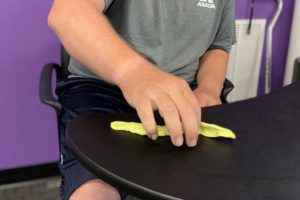Witte Physical Therapy….to….Witte 24/7 Wellness
April 18, 2023

We often think of physical therapy as the place to go after a surgery or major injury. Over the years physical therapy has become more of a place to go when we have pain, issues with balance, or problems doing things that we want to do. But physical therapy can also be a place to go to prevent injury and promote wellness. This last aspect of physical therapy is often the one that gets overlooked.

When Witte Physical Therapy moved into its new location in Louisville in 2019, we wanted to provide resources to the community beyond basic and normal physical therapy. We opened Witte 24/7 Wellness as an avenue for that. Witte 24/7 Wellness is a fitness facility that is open 24 hours a day, 7 days a week, 365 days a year. It provides an outlet for anyone to improve their aerobic capacity, baseline strength, and overall wellness. With equipment ranging from treadmills, bikes, and ellipticals to cable machines, free weights, and a Smith machine, we have equipment for every member of the facility to utilize. We even have a stair stepper, a water rower, a personal trainer, and an exercise physiologist.

Our exercise physiologist, Alex Trautman, is also one of our physical therapists. This allows us to work with patients on injury prevention in the clinic and then transition our patients into our Wellness center for continue to work on lifetime gains and benefits. This is one of our goals with our patients. Whether you are recovering from an injury or surgery or working to prevent any future injuries or surgeries, our therapists can work with you on a transition plan from our clinic into a Wellness facility. Alex has special training in this area and enjoys getting to work with patients in both settings. Imagine being able to take your PT “with you” after you leave the clinic, what an advantage!
At Witte Physical Therapy our goal is to never see you twice for the same thing. We want to work to get you pain free, moving and feeling better and then give you the tools to maintain and prevent future injuries. Our therapists are trained in this and our facilities allow us to work with to transition you away from the clinic and into your home or a Wellness center.











